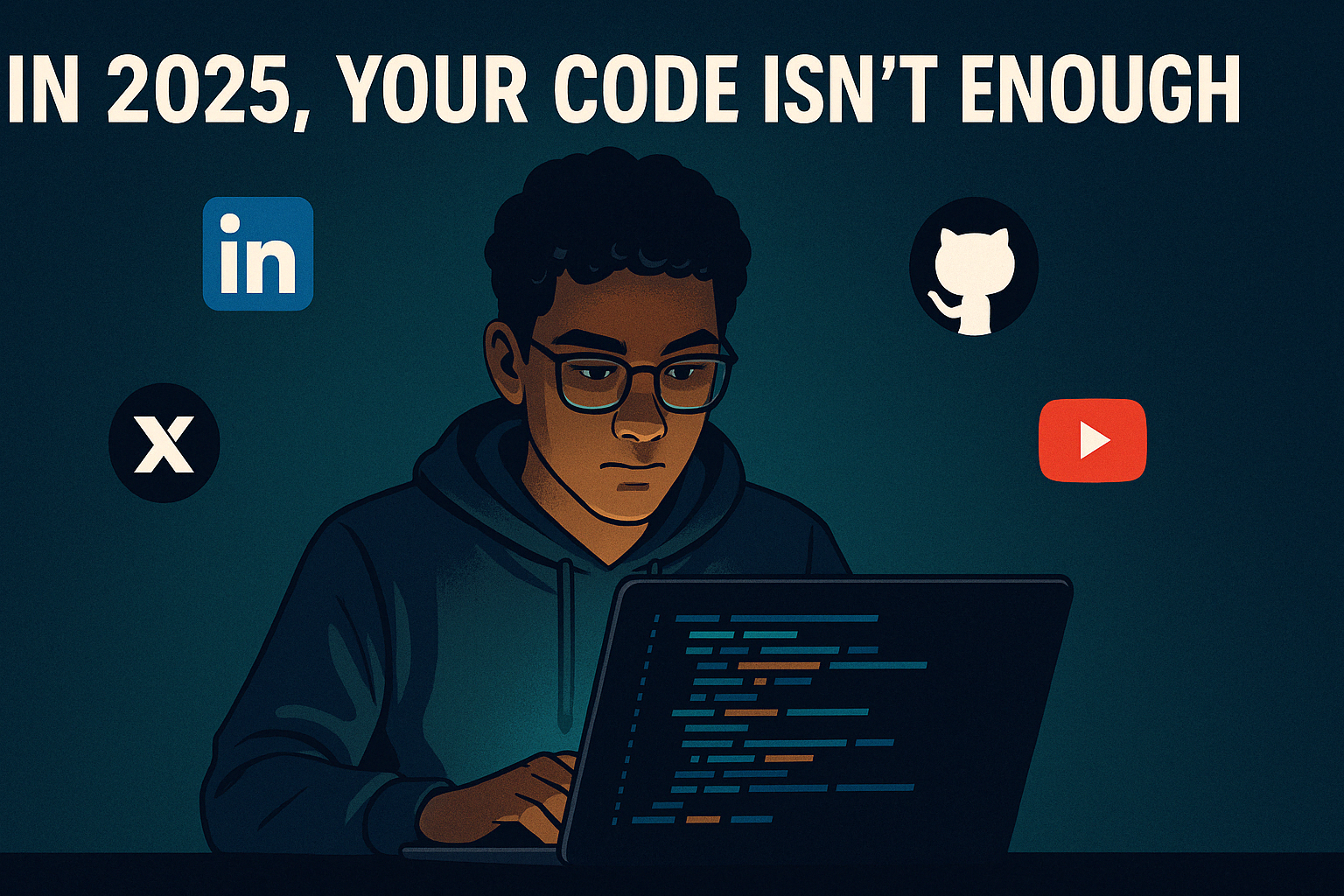No Portfolio, No Problem: How Coders Are Using Threads & Tweets to Get Hired
No Portfolio, No Problem: How Coders Are Using Threads & Tweets to Get Hired
The Shift You Didn’t See Coming
Not too long ago, to start working as a developer, you needed to possess an amazing portfolio, a GitHub repository full of green squares, and a website to showcase everything. Cut to 2025, something unexpected is happening.
Developers are skipping the conventional path, yet they’re getting hired anyway, not by their portfolio or resume, but with Threads.
Yes, those short tweet-storms, and they’re replacing the portfolio site. Just those, and they’re doing great as well.

The Tweet That Changed Everything
At the beginning of 2025, a developer, Aanya, made a thread on X (formerly Twitter) where she outlined how she reverse-engineered Spotify’s UI in React. No fancy portfolio. No personal site. Just code snippets, visuals, and 10 concise storytelling tweets.
Just two weeks later, she was employed as a front-end developer at one of the top startups.
This is what hiring developers will be like in the future — where you’ll be using threads as your portfolio, and a single viral tweet as your resume.
Why Traditional Portfolios Are Fading Out
Portfolios take quite some time. From deciding on a domain name to laying out a design and experimenting with other projects, the developer eventually burns out before hitting the publish button.
And even then, job recruiters do not have much time to screen every single application.
To the contrary, a well-written thread:
- Offers appropriate context.
- Recites a story backed by technical depth.
- Reaches the intended audience immediately.
Enter: Thread-First Branding
Developers are redefining the concept of portfolio by creating a “public portfolio” through micro-content:
- Breakdown of side-projects
- Learn-in-public recaps
- Tech hot takes (backed by code)
- Build-in-public updates
- Surveys and interactive dev challenges
This isn’t just content. It is personality plus proof of work.
The Hiring Shift: What Recruiters Are Really Looking At
The employers of 2025 aren’t just receiving what you’ve made, but:
- How you articulate the process
- How do you collaborate with individuals online
- How do you convey technical ideas
And your social updates provide a front-row seat to all of that.
That thread on refactoring your JavaScript logic? It’s highlighting:
- Problem Solving
- Technical Know-how
- Communication
It is far more valuable than a static code repository gathering dust.
Real-World Examples
- Jay, a self-taught Python dev, shared his weekly progress logs of his Django app on Twitter. For 3 weeks, a manager viewed his tweets regularly and finally contacted him with an interview offer.
- A backend engineer, Neha, broke down the good and bad of different caching strategies. The post became popular within the developer community and landed her a public speaking invite and three job offers in DM.
But Is It Too Casual?
Not anymore. Startups and even medium-sized tech firms look at candidates’ social media profiles to begin with, rather than GitHub. It's more human and quicker, and an indication of culture fit. Additionally, you get to control the narrative.
No Portfolio? Go with this
Here’s how to grab the recruiter’s attention with a solid Twitter job search profile:
- Identify Your Niche: Backend Superman? UI Wizard? Cloud Dev? Own it!
- Choose The Format: The thread, images, memes (yes, memes), polls, or brief case-studies — feel free to use any of these.
- Stick to it: Post just once every week. That’s all you need to do. Bare minimum.
- Engage Smartly: Comment insightfully, follow relevant hashtags, and join in on the trending dev convos.
- Showcase Your Best Stuff: That viral thread discussing debugging? Make sure it’s visible as soon as your recruiter notices and opens your profile.
Final Thread (Literally): Your Audience Is Watching
In 2025, your code does not have to sit quietly on a portfolio website. It can speak, interact, trend, and convert — all in the form of tweets.
You don’t need an ideal design. You need personality. You don’t need 10 years of experience. You need proof of thought.
No portfolio? No worries.
Your next job offer might be just one thread away.
Looking to build a high-performing remote tech team?
Check out MyNextDeveloper, a platform where you can find the top 3% of software engineers who are deeply passionate about innovation. Our on-demand, dedicated, and thorough software talent solutions are available to offer you a complete solution for all your software requirements.
Visit our website to explore how we can assist you in assembling your perfect team.





